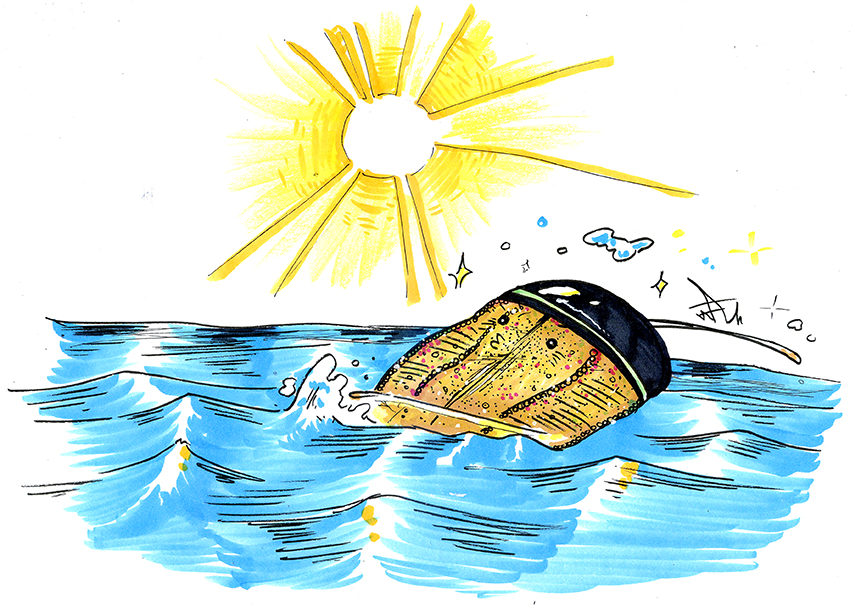Scientists believed that diatoms, a type of one-celled plankton, were only able to sink through the water, but new research suggests that they have more control over their movements than previously thought.
Marine biologists have discovered that diatoms can rapidly change their buoyancies, in a motion similar to swimming, possibly in order to help in their food collection.
Diatoms lack cilia or flagella to create movement and scientists had previously assumed they were only capable of sinking. The research, which was published Oct. 5 in the Proceedings of the Royal Society B, shed light on how diatoms compete for food with swimming organisms.
Diatoms are a type of unicellular algae and phytoplankton that act as producers in oceanic ecosystems. They are swept up near the surface by ocean currents and turbulent water, where they use sunlight to conduct photosynthesis.
“They can be responsible for up to 40 percent of the productivity of the ocean — you could think of the fact that 40 percent of the seafood we eat is derived from these small diatoms,” said Brad Gemmell, first author of the study, assistant professor at the University of South Florida and UT marine science alum. “They’re really the base of the food web.”
Unlike many other types of phytoplankton and marine organisms, diatoms don’t have body parts that allow them to swim . They obtain food by absorbing nutrients from ocean water, which is a very competitive process. Diatoms are relatively large and at a disadvantage for food absorption due to their bodies’ reduced surface areas.
Through modeling and calculations, researchers found that diatoms made sinking and stopping motions in very short time scales to control their movements. Marine biologists had previously used bulk rates to represent diatom sinking in studies of oceanic ecosystems.
“What we have found is that they don’t have to sink continuously — they can stop and take up all the nutrients, and stop and drop a fraction of an inch and take up some more nutrients,” said Edward Buskey, UT professor of marine science and co-author of the study.
Diatoms require sunlight for photosynthesis, but parts of water near the ocean’s surface tend to be low in nutrients. This sinking and stopping movement may aid in obtaining food while they stay close to sunlight, Buskey said.
Although diatom sinking has long been of importance to ocean productivity and carbon and silicon cycles, scientists were not aware they were capable of changing their own movement. This provides a potential explanation for how they contend for food with smaller and swimming organisms.
The sinking and stopping is accomplished by regulating ion movement in and out of their vacuoles.
“They can change the composition of their vacuole to be less dense than seawater, like bags in a hot air balloon,” said Tracy Villareal, UT professor of marine science and last author of the study. “They play these control games by ion pumps across membranes — all microscopic life has to regulate how these ions are balanced.”
Researchers’ next step is to see if this behavior can be observed over a wider range of diatom species, as well as how diatoms behave in water turbulence or at night.
“These organisms are found everywhere in the ocean, which covers 71 percent of the planet, so they’re really abundant and important in marine food webs,” Gemmell said. “What I think this does is it completely changes the way we think about these really important organisms.”















